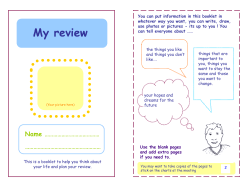
Welcome to Celerion`s Dinner and Discussion Program
Welcome to Celerion’s Dinner and Discussion Program Tokyo, Japan Apr 2, 2015 Efficient Clinical Pharmacology Study Designs Elliot Offman B.Sc. Pharm., M.Sc., Ph.D. (cand.) Senior Director, Clinical Pharmacology Sciences Research & Development (R&D) Process: PhRMA 2013 Profile New Drug And Biologics Approvals/R&D Spending Reprinted with Permission: Tufts CSDD: PhRMA 2014 industry Profile Phase Transition Rates Tufts CDSS 2014 Hays 2014 Reprinted with Permission: Tufts CSDD: PhRMA 2014 industry Profile Attrition Rate of NME Due to PK/ADME 45 40 35 30 25 1964-1985 2000 20 15 J. Clin. Pharmacol. 1988 Nat. Rev. Drug Disc. 2004 10 5 0 % Attrition Rate NME: New Molecular Entity PK: Pharmacokinetic ADME: Absorption, Distribution, Metabolism & Excretion Characteristics of an Efficient First-in-Human Study Establishes drug does not elicit acute, treatment-limiting adverse events Characterizes the ADME properties: Peak exposure Overall exposure Half-life Identifies influences for future patient exposure Effect of food for oral dosing Site of administration for Subcutaneous (SC) Timing of dose Minimizes time and cost to Proof-of-Concept (POC) step Efficient First-in-Human Designs MAD HS – 5th dose level MAD HS – 4th dose level MAD HS – 3rd dose level MAD HS – 2nd dose level Time MAD HS – 1st dose level Simulate exposure using noncompartmental or compartmental approach SAD HS – 5th dose level SAD HS – 4th dose level SAD HS – 3rd dose level SAD HS – 2nd dose level SAD HS – 1st dose level SAD HS = Single Ascending Dose – Healthy Subjects MAD HS = Multiple Ascending Dose – Healthy Subjects What Do We Know/Understand Regarding the Target Population? CYP1A Substrate, will smokers receive drug in POC? Indicated in obese patients? Is meal time important? Will it be likely the POC population will be on conmeds known to perpetrate DDIs? CYP: Cytochrome P450 Enzyme POC: Proof-of-Concept DDI: Drug-Drug Interaction Integrate Intrinsic/Extrinsic Factors into SAD/MAD MAD HS – 5th dose level MAD HS – 4th dose level Patient population? MAD HS – 3rd dose level MAD HS – 2nd dose level Time MAD HS – 1st dose level Simulate exposure using noncompartmental or compartmental approach SAD HS – 5th dose level SAD HS – 4th dose level SAD HS – 3rd dose level SAD HS – 2nd dose level Extrinsic factor (e.g. smoking, DDI) X-Over Food Effect Intrinsic factors (e.g. obese, elderly?) SAD HS – 1st dose level Integrate Intensive Electrocardiographic (ECG) Monitoring for Early Cardiovascular Signal Time SAD HS – 5th dose level SAD HS – 4th dose level SAD HS – 3rd dose level SAD HS – 2nd dose level SAD HS – 1st dose level Each Cohort ECG Extractions Single 24hr Holter monitoring session Three triplicate baseline timepoints 6-9 triplicate postdose timepoints Proactively plan for extended supine periods SAD Allows for Evaluation of Potentially SupraTherapeutic Exposure QTcF: Fridericia corrected QT interval msec: millisecond Δ: Greek letter ‘Delta’ represents change from baseline, change from placebo Concentration (ng/ml) Discrete SAD & MAD Protocols with Pause Between Phases Pros Cons Low risk Allows for full evaluation of SAD Safety and Exposure prior to designing the MAD Longer duration due to not starting MAD until SAD complete Potentially higher cost associated with multiple protocols, CSRs, study start-up, IRB approval CSR: Clinical Study Report IRB: Institutional Review Board Sequential SAD/MAD Under a Single Protocol with PK Pause Between Phases 0 1 2 3 4 8 9 10 Approx. No. Weeks From FPFV MAD HS– 3rd dose level MAD HS– 2nd dose level MAD HS– 1st dose level Interim PKPD Check To Finalize MAD Plan SAD HS– 4th dose level* SAD HS– 3rd dose level* SAD HS– 2nd dose level* SAD HS– 1st dose level* FPFV: First-patient enrolled, first visit Sequential SAD & MAD protocols with pause between Phases Pros Cons Cost/time savings due to single protocol, analysis plan, study start-up Single IRB approval Pause between SAD/MAD reduces risk/time/cost of amendments due to study changes based on SAD results (e.g. duration/ frequency of dosing based on exposure data) Longer duration than overlapping SAD/MAD May require additional amendments relative to sequential discrete SAD/MAD protocols Overlap SAD MAD with Transition After 3rd SAD Cohort Approx. No. Weeks From FPFV 0 1 2 3 4 5 6 7 8 MAD HS– 3rd dose level MAD HS– 2nd dose level MAD HS– 1st dose level +/- PK Pause of Interim To amend MAD Plan SAD HS– 5th dose level* SAD HS– 4th dose level* SAD HS– 3rd dose level* SAD HS– 2nd dose level* SAD HS– 1st dose level* Overlap SAD MAD with Transition After 3rd SAD Cohort Pros Cons Cost/time savings due to single protocol, SAP, study start-up Risk is highest when little is known about exposure scaling and/or safety signals apparent in toxicology program Single IRB approval Allows for faster transition to POC/special populations than sequential SAD/MAD Allows for continued exploration of single-dose evaluations while MAD on-going (intrinsic/extrinsic factor testing: elderly, obesity, smoking effects, food-effect) Typically associated with protocol amendments (but can be mitigated by flexible/adaptive protocol construct Amendments may be needed for I/E, additional safety between SAD and MAD No true idea regarding MAD PK/Safety if transitioning without interim check Lessons Learned: Combined SAD/MAD Combining is lowest risk when more is known about the NCE PK/exposure well understood and consistent across species If not, definitely recommend interim PK between SAD cohort or at least one pause prior to MAD Failure to write protocols adaptively/flexibly results in multiple amendments & additional IRB review Delay in data delivery Additional costs Failure to confirm PK prior to MAD More cohorts dosed than necessary Longer duration to POC than necessary Desire to combine too many unrelated objectives can delay important milestones and adds risk (e.g. addition of a DDI arm adds risk to a combined SAD/MAD when PK in absence of DDI unknown and safety issues arise) Efficient Clinical Pharmacology Studies After FIH: Case Study Small molecule oncology drug being developed for several indications (including lung cancer) In-vitro/cell culture screening implicate CYP1A2 and CYP3A4 mediated metabolism IND comments from FDA specified to exclude patients on CYP 1A2 inhibitors (e.g. ciprofloxacin) & 3A4 inhibitors (e.g. clarithromycin, ketoconazole) or test before further patient studies Cardiac signal in dog CV study ….how can these objectives be addressed efficiently? CYP: Cytochrome P450 Enzyme CV: Cardiovascular Study 1: Food-effect + Effect of Smoking (CYP1A induction) Study 1 A: Fasted B: Fed 2-period single-dose x-over in HS B: Fed A: Fed Fasted Fed Parallel group comparison to HS moderate-heavy cigarette smokers X-over: Crossover Design HS: Healthy Subjects C: Smoking group Study 2: Parallel Cohort, Fixed-Sequence DDI with Intensive ECG Monitoring Study 2 SD Drug X MD Itraconazole SD Drug X with Itraconazole *SD Drug X MD Cipro *SD Drug X with Cipro 2-distinct parallel cohorts SD: Single-dose MD: Multiple-dose DDI: Drug-Drug Interaction 60 Indiv idual Value Regression Line 50 Change From Baseline in QTcF (msec) Fixed-sequence test of itraconazole (strong CYP3A4 inhibitor) Fixed-sequence test of ciprofloxacin (strong CYP1A2 inhibitor) Intensive ECG monitoring on cipro arm to test effect of higher concentrations of substrate on ΔQTcF * Holter monitoring for potential concentration vs. QTc effect 40 30 20 10 0 -10 -20 0 30 60 90 120 150 180 Multiple DDIs Integrated into a Single Cohort NCE being developed for CNS indication In-vitro testing and PBPK simulations suggests NCE is inhibitor of MATE-2 and OCT transporters NCE ~7 days to achieve steady-state Objective to test MATE-2 and OCT probe substrates in the same study at steady-state concentrations of NCE CNS: Central Nervous System MATE-2/OCT: Drug Transporter Multiple DDIs, Single Cohort NCE Twice Daily from Day 7 through to PM dose on Day 23 Study Day 1 4 Metformin Pramipexole 3 day washout 7 14 21 15 Pramipexole Metformin 6 day washout Legend Day 1: SD Metformin 500 mg, full PK profile Day 4: SD Pramipexole 0.25 mg, full PK profile Day 7-22: NC mg twice daily (last dose is PM dose) Day 14: PK profile of NCE over AM dosing interval Day 15: SD Pramipexole 0.25 mg, full PK profile in presence of NCE Day 21: SD Metformin 500 mg, full PK profile in presence of NCE Drug-Drug Interaction Studies: Combining Objectives and Panels Under a Single Protocol 2012-2014 at Celerion 140 120 100 80 60 40 20 0 Total 1 2 ≥3 Thank You! ありがとうございました。
© Copyright 2025









